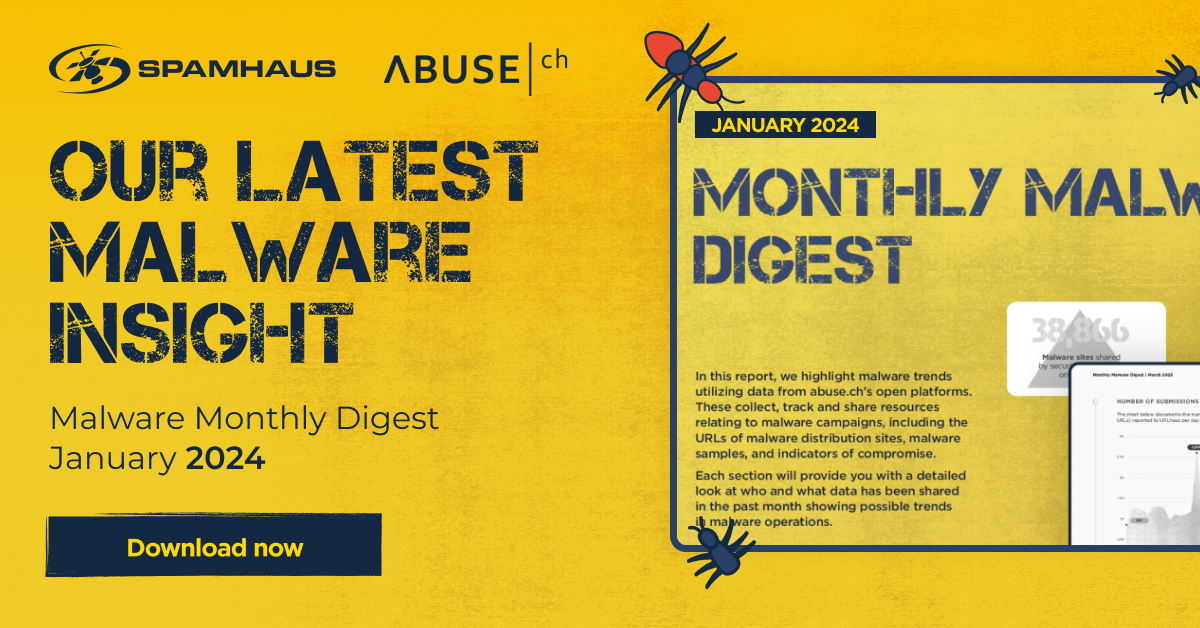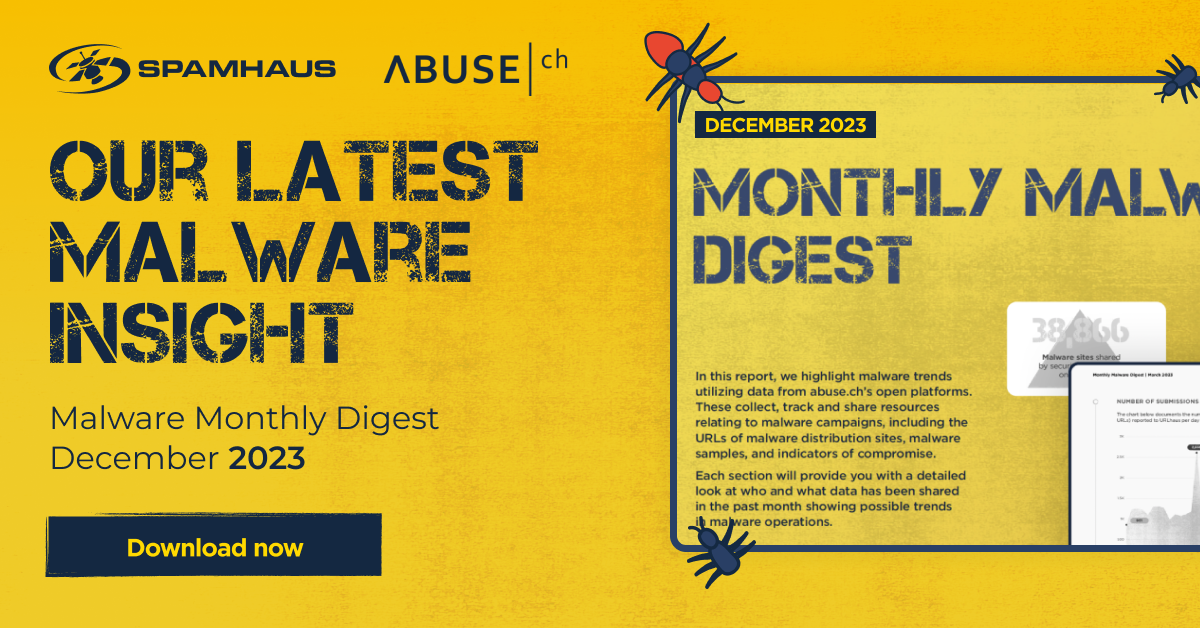blog
Botnets disrupted worldwide...Operation Endgame is BACK!
In this Blog
Jump to
Introduction
The long-awaited Operation Endgame, “Season 2”, is officially announced as of Friday, May 23rd, 2025. International law enforcement agencies and their partners have once again joined forces – with one aim of the (End)game – to disrupt and dismantle botnet infrastructure and their operators. The targets have all played a crucial role in facilitating successful ransomware attacks, and with Season 1’s noteworthy impact, we anticipate the same for this latest Operation. In this post, get details of the take-down tale itself and Spamhaus’ role in the current Operation, specifically with victim account remediation.
Stolen credentials: the golden information
Operation Endgame 2.0 has targeted Bumblebee, Latrodectus, Qakbot, DanaBot, Trickbot, and WarmCookie. It’s an operation focussed on initial access malware; a crucial component of running cybercrime infrastructure to penetrate systems, unnoticed, before deploying ransomware.
Stealing credentials is a critical component for many cyber criminals. Threat actors obtain these credentials through remote access tools (RATs) and infostealers, using the compromised accounts to propagate malware or to gain a foothold within targeted networks and organizations. The affected accounts have been shared with Spamhaus, who will assist in mitigating and remediating the threat.
Operation Endgame: victims' account remediation
Before diving into the takedown story, here’s the overview of the support Spamhaus is providing to aid in remediation:
The botnet operators rely on gaining initial access often through stealing credentials. A common tactic is via phishing emails with malicious attachments - we share more on the specifics of each malware below. Those who engaged in the operator's tactics likely became part of the targeted botnets.
The remediation effort is expansive across the globe; authorities have shared data on these compromised accounts with Spamhaus for action to be taken.
Spamhaus is notifying Internet Service Providers, Email Service Providers, Hosting providers or any other organizations responsible for these accounts.
We strongly urge all organizations contacted by Spamhaus to act swiftly once contacted to support in securing these accounts. This can be achieved through a simple password reset, as these accounts are still circulating!
For more information, see our Operation Endgame remediation page.
The takedown tale – part 2
Operation Endgame is back. Following the progress initiated by May 2024’s operation, which has since facilitated detentions and interrogations, as well as server takedowns to disrupt the largest malware distributors, “Season 2” is poised to further these advancements.
As with any operation involving the cybercriminal ecosystem, we must remain cautiously optimistic, though – these operations rarely, if ever, form a linear path.
Last year’s Operation Endgame saw the disruption of IcedID, Smokeloader, SystemBC, Pikabot and Bumblebee. In its latest phase, between May 19th and May 22nd, Operation Endgame dismantled key infrastructure behind the malware used in ransomware attacks, targeting Bumblebee, Latrodectus, DanaBot, and WarmCookie. While Qakbot and Trickbot were not actively operating, this phase did include indictments against individuals connected to these groups.
Authorities have taken down more than 300 servers worldwide and seized 650 domains. Investigators have effectively disrupted the ransomware kill chain, shutting down active threats and undermining the overall cybercrime-as-a-service ecosystem. What’s more, authorities seized EUR 3.5 million in cryptocurrency, marking a significant financial blow to the criminals behind these operations.
Once again, it was a truly international effort, with contributions from authorities in Canada, Denmark, France, Germany, the Netherlands, the United Kingdom, and the United States, with support from Europol and Eurojust. The authorities have been supported by numerous partners, including Spamhaus, to share information and support with remediation efforts to ensure this operation has the greatest impact possible.
Through this coalition, 20 individuals believed to be key actors behind these ransomware operations have international warrants for their arrest. And the pressure is about to increase. On May 23rd, German authorities added 18 suspects to the EU’s Most Wanted List, putting their faces front and center.
This is more than just a tactical win. It’s a strategic disruption that weakens the entire ecosystem enabling ransomware attacks. Follow Operation Endgame on the official website to stay up-to-date with the latest developments.
Press releases & announcements
Europol: Operation ENDGAME strikes again: the ransomware kill chain broken at its source

